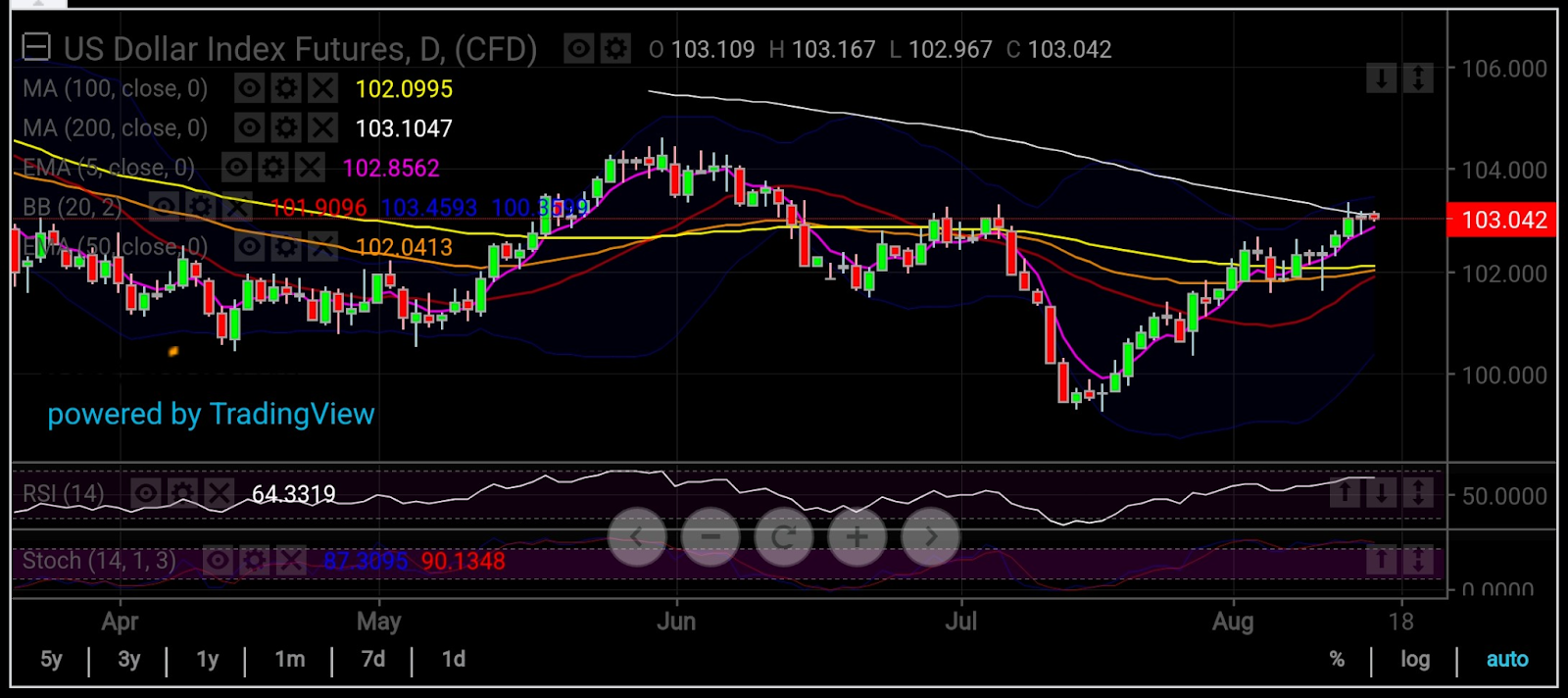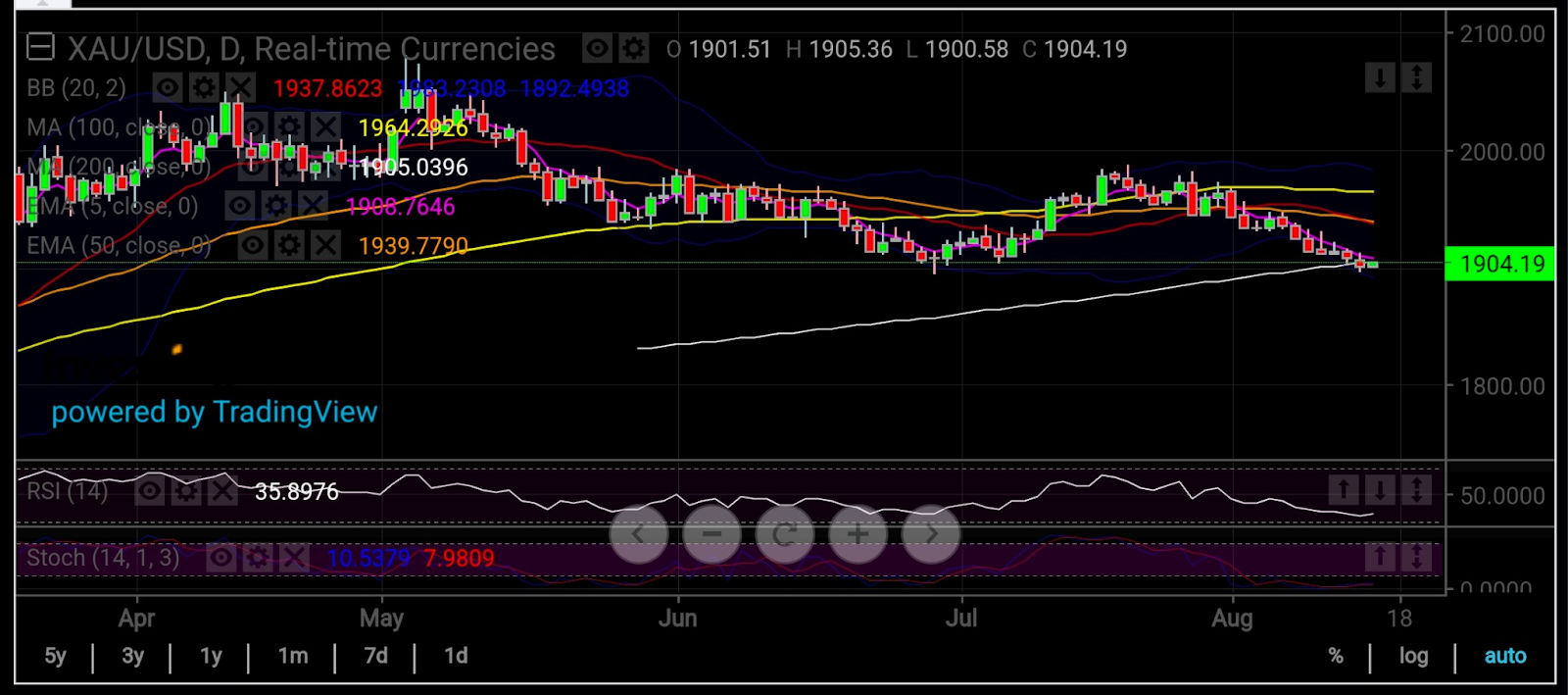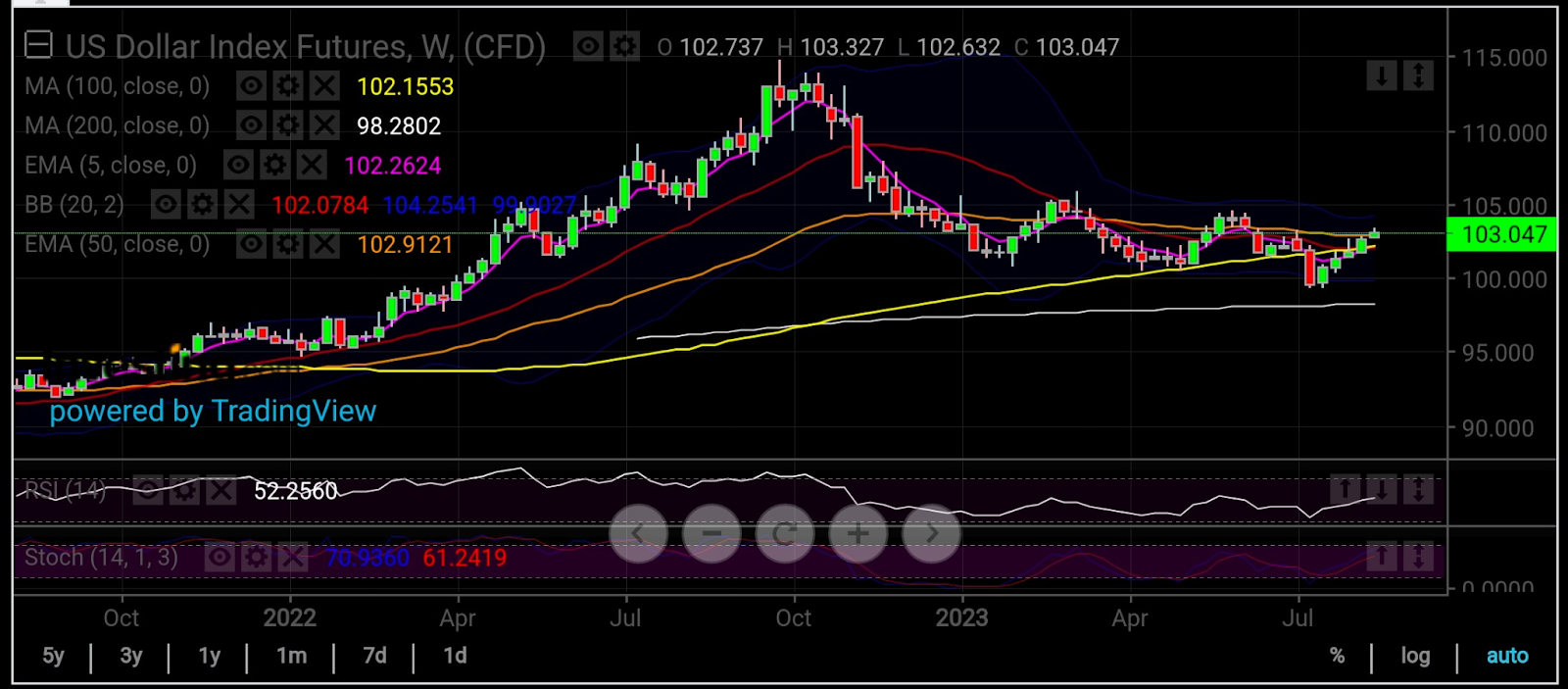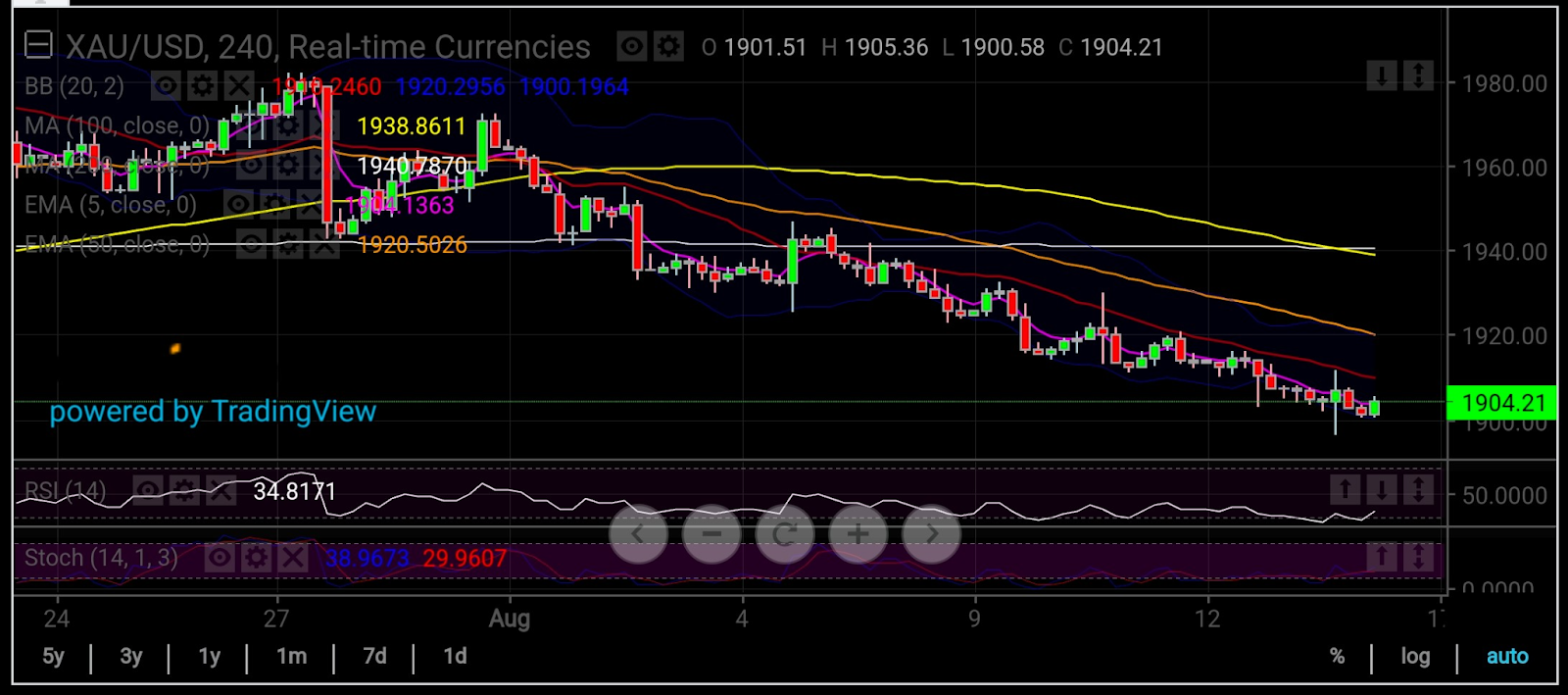Gold Poised For Mid-$1,800 Challenge Amid U.S. Dollar Flight
2023.08.16 05:00
- After muted US July CPI, stronger retail sales keep Fed in hawkish mode
- Dollar Index charge above 103 could drive spot gold to as low as $1,846
- If dollar slides goes well below 103 perch, bullion could reclaim $1,960 mantle
A couple of weeks ago, we that a strong , regardless of what inflationary readings for July showed, could send the spot price of gold below the key $1,900-an-ounce support.
The spot price, which goes by the trade symbol of and tracks real-time trades of bullion, was then emerging from a one-month low beneath $1,922. Some gold traders follow XAU more closely than futures, which are known by the symbol.
True enough, the US annual growth of 3.2% in July — a tad lower than the forecast 3.3% and a little higher than June’s 3.0% — barely dented the rebound of the dollar from 15-month lows.
The Dollar Index, known by the symbol DX, fell to 99.22 on July 18, its lowest since April 2022. DX now hovers at just around 103.

Charts by SKCharting.com, with data powered by Investing.com
XAU, on the contrary, sank below $1,897 in the past 24 hours, hitting its lowest since June 29. On the futures side, the front-month GC contract on New York’s Comex, December, wasn’t too far from the spot price, tumbling to $1,895 on Tuesday.

At the time of writing, December gold had recovered to around $1,935. But XAU hovered at under $1,905. The spot price’s vulnerability to another break below $1,900 is one reason why it’s more closely followed than futures.
Context: Why DX Could Keep Rising Near-Term to XAU’s Detriment
While the July CPI data raised more questions than it provided clues on how the Federal Reserve might respond to latest US inflationary numbers, Tuesday’s reading for last month emitted a stronger hawkish signal for the central bank.
US retail sales beat expectations by growing twice more in July than in June, according to Commerce Department data on Tuesday that also raised expectations for the Federal Reserve to consider another rate hike in September to quell inflationary pressure from extraordinary spending.
Consumer spending accounts for at least 70% of the US economy, with Americans’ purchase of food, fuel, and merchandise being among the key things that add to inflation, aside from their wages.
Retail sales grew by 0.7% in July versus a 0.3% expansion in June, the Commerce Department reported. Economists on Wall Street had expected a growth of just 0.4% last month.
“The higher reading … [marks] the fourth month in a row of gains and highlights the ongoing strength of the US consumer,” economist Adam Button said in a post on the ForexLive forum.
Demand for goods, food, and other items has remained resilient among Americans despite aggressive interest rate hikes by the Fed to tame inflation. The central bank has raised the rates by its most in 22 years, adding 5.25% over just 18 months to its previous base of 0.25%.
The Fed’s next decision on rates is on Sept. 20. Following the retail sales data for July, the expectation among money market traders for a rate hike of another 0.25% next month stood at 12% from a previous forecast of below 10%. The central bank has said it will process a lot more data over the next six weeks before September’s decision day on rates.
The Fed identified sterling jobs growth and correspondingly higher wages — and trillions of dollars of relief spending over the 2020 coronavirus outbreak — for the runaway inflation from a year ago. While the pandemic spending is over, jobs and wage growth have fueled inflation, prompting the Fed to keep adding to interest rates.
While July’s 3%-per-annum growth in the CPI was the smallest in two years, it was still well above the Fed’s target rate of just 2% per year.
DX steadied near a 1-½ month high on Wednesday, recovering sharply from 2023 lows over the past month.
Even if the Fed doesn’t raise interest rates further, it is still expected to keep them at over 20-year highs until at least mid-2024, presenting a weak outlook for gold and other non-yielding assets.
Dollar/Gold Scenarios
With the DX-XAU play turning out as we suspected, we now cast the ball forward on what we think we’ll likely see for bullion from here: the mid-$1,800 challenge.
Here are scenarios for the dollar and spot gold going forth as laid out by SKCharting.com’s chief technical strategist Sunil Kumar Dixit:
Scenario 1:
- Stronger DX – Above 103
- Weaker Gold – Towards $1,846
If the current strength in the Dollar Index continues above 103, gains can extend to the next resistance, 104.10 and 104.50.

As long as gold maintains stability below the immediate resistance level of $1,910 and especially below $1,920, the strengthening dollar will keep bullion under pressure, pushing prices below the 200-day SMA, or Simple Moving Average, of $1,896. XAU remains open for a further drop to $1,888-$1,875, followed by the monthly middle Bollinger Band’s target for $1,850 and the 100-week SMA’s potential for $1,846.

Scenario 2:
- Weaker DX – Below 103
- Stronger Gold – Towards $1,960
If the Dollar Index consolidates below 103, we can expect a further drop to 102 and 101.50.

As long as the yellow metal maintains stability above $1,896 — which corresponds to the 200-day SMA, as well as the 50-week EMA — we expect a short-term rebound toward the initial resistance of $1,910.
Above this immediately sits the $1,920 level, which would be a critical barrier to be cleared for a resumption of the uptrend. The target would be a retest of the 50-day EMA, or Exponential Moving Average of $1,940, followed by a major challenge to the weekly Middle Bollinger Band $1,960, which would be critical for a trend reversal.
***
Disclaimer: The content of this article is purely to educate and inform and does not in any way represent an inducement or recommendation to buy or sell any commodity or its related securities. The author Barani Krishnan does not hold a position in the commodities and securities he writes about. He typically uses a range of views outside his own to bring diversity to his analysis of any market. For neutrality, he sometimes presents contrarian views and market variables.







